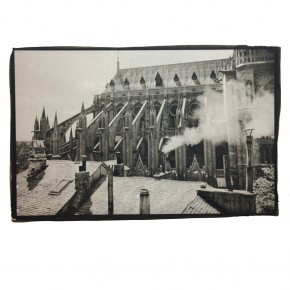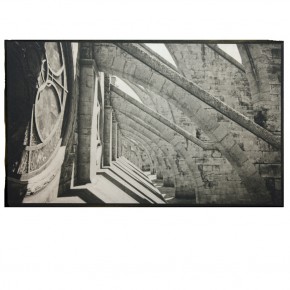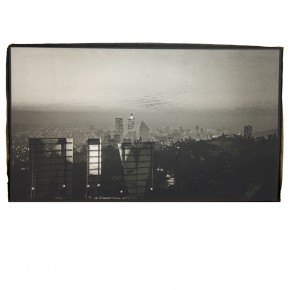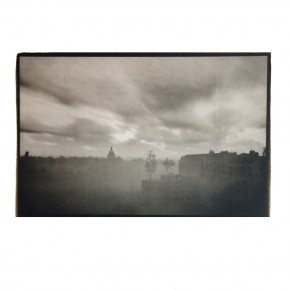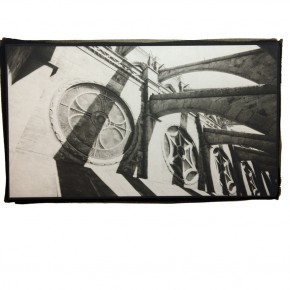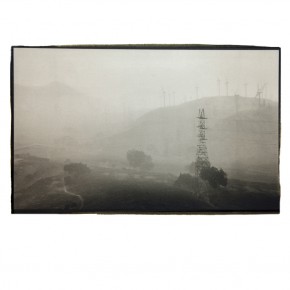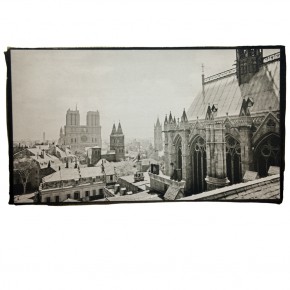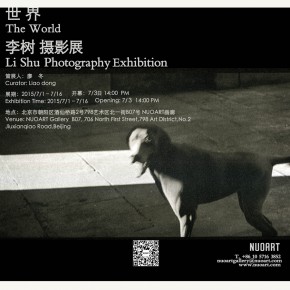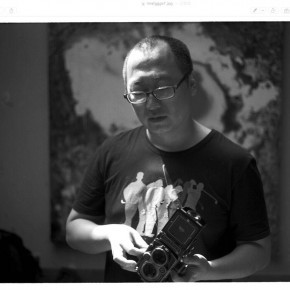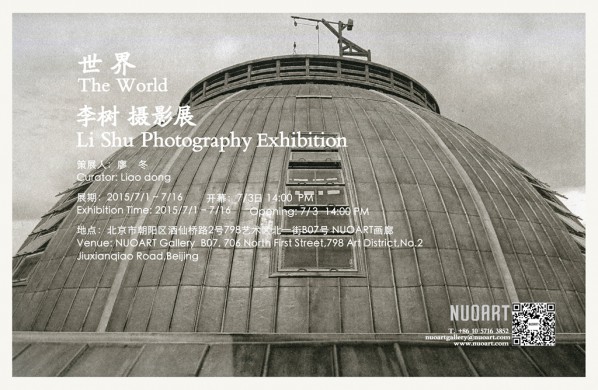
Liao Dong
The questions most people ask after seeing Li Shu (Li Bing)’s works are more or less the same: “Did you take these photos during previous travels?” or “How did you climb up to the roof of the building?” Li Shu, whenever being asked such questions, always explains with a good temper: Actually, those photos do not come from the real world. The “world” they come from is the ever changing and unpredictable virtual reality of an online game. He, a “senior” game player, unlike other people who enjoy complete as much tasksas possible or indulge in the social communication in the game world, brings his identity of photographer in real life into the game. Instead of capturing the mirror images from the real life he captures the “real” mirror images from another virtual world.
His early years seemingly slightly relates to his choice of such kind of “world”: the experience of fine arttraining during childhood, the education he received in his youth and the subjects he frequently works in earlier jobs all closely connect to spatiality and visuality. He tends to value most the visual design and interactive experience of a game. “Just like seeing a blockbuster movie”, he said, “Modern technology has been growing by leaps and bounds. As a result online videogames are becoming increasingly well-made. The waves of the sea, the hustle and bustle of the cities, the virtual reconstruction of the classic architectures and the stray dog occasionally emerging on the street, all of which makes you waver and daze. When standing in a virtual world that highly resembles reality, sometimes you cannot distinguish the unreal and the real.”
Some people rashly call him “Videogame Photographer” because of the series “world”. The phrase “Videogame Photographer” derives from “Videogame Photography”a new genre of photography in the west. The photographers shoot photos while “in” the videogames; they snapshot the scenes ofgames, they express their own understanding of the games through creating works from their personal perspectives. Among them, the most famous is Duncan Harris, a U.K. game reporter: his personal website DeadEndThrills is famous in the videogame industry which publishes a large number of high resolution game screenshots from many renowned games.
It seems completely inappropriate to seethe photography works of Li Shu as such. The photography of Harrisis made to generate appeal, so that game players will havebetter impressions on the games and achieve better game experience; in other words, it acts more like commercial advertising, or a gift to the commercial games. Works of Li Shu question and contemplate on his identity and the essence of photography in the contemporary society. More precisely, he questions our perception of reality: we are currently under “a minimized of reality and maximized simulation (e.g. the social network and Internet used every day).”Therefore, the “world” is more like his preliminary test, exploring and studying the perception of reality; certainly such kind of exploration includes another layer of humorous life experience. Li Bing, just like Jake who left the human camp by the power of Avatar thus saving people of Na'vi, traveled to a virtual world, replicated his identity as photographer, and brought back a group of works made by his virtual identity Li Shu, which can be seen as a surprising gift.
Regarding presentation of works, most game photographers complete their works by selecting some of their frozen-frame screenshots, which are then published online. Like Harris said, he preferred others to call his act “Screenshotting”. Li Shu, totally different from Harris, completed his creation by employing the traditional style and technology: from the traditional film cameras used in shooting to the experiment with silver salt and wet plate, and finally to the determination on using platinum prints; He waited for the morning glow and setting sun in the game again and again, refusing to shoot the frozen-frames. The photos are later developed by manual labor, with hardly any post productionalteration. The many traditions relevant to photography were kept in the group of works of “world” all the time.
Today, the visual aesthetics of some videogamesgreatly exceeds most mediocrely produced movies. However, there are debates with condemnation on whether if videogames shall be considered as art, just like the same debates about movies. If we temporarily ignore the argument on classification, human being’s loyal pursuit for beauty and visual aesthetics has never stopped. The “world” of Li Shu has the same purpose: the colorless black and white is a coat of platinum prints covered on the “world”, which transfers time and space and reemerges itself. The images previously known to us now show a bit of strangeness. There, the sparkling beam of the rocks seems to be only a gift from the sun, but the brightness of the daylight and the expansiveness of sky highlight the gloom of the night. The solid volumes of the rising apsis, temples and porches disperse thick mist under the light, making the space even brighter and clearer. The tranquility and ambiguity expressed by the traditional platinum technology is in opposition to the illusory temperament sent out by the space field in the works, yet the former and the latter balance each other and coexist in Li’s work. His “world” talks to people, invites them to listen, to question, makes them ponder and leads them to think in such a manner. So to speak, the “world” is Li Shu’s voicing and questioning on photography, it is also his exploration and discovery of the greater possibility and influence of photography in our brave new world (a.k.a. the Internet Era).
About the artist
LI BING, Lives and works in Beijing, China
1979 Born in Liaoning Province
2000 Graduated from Fine Arts School Affiliated to China Central Academy of Fine Arts
2007 Bachelor degree in The Central Academy Of Drama
2012 Master degree in The Central Academy Of Drama
Solo Exhibition
2015 ‘The World’,NOUART, Beijing
About the exhibition
Curator: Liao Dong
Dates: Jul 1, 2015 - Jul 16, 2015
Opening: Jul 3, 2015, 14:00, Friday
Venue: NUOART Gallery
Courtesy of the artist and NUOART Gallery.


